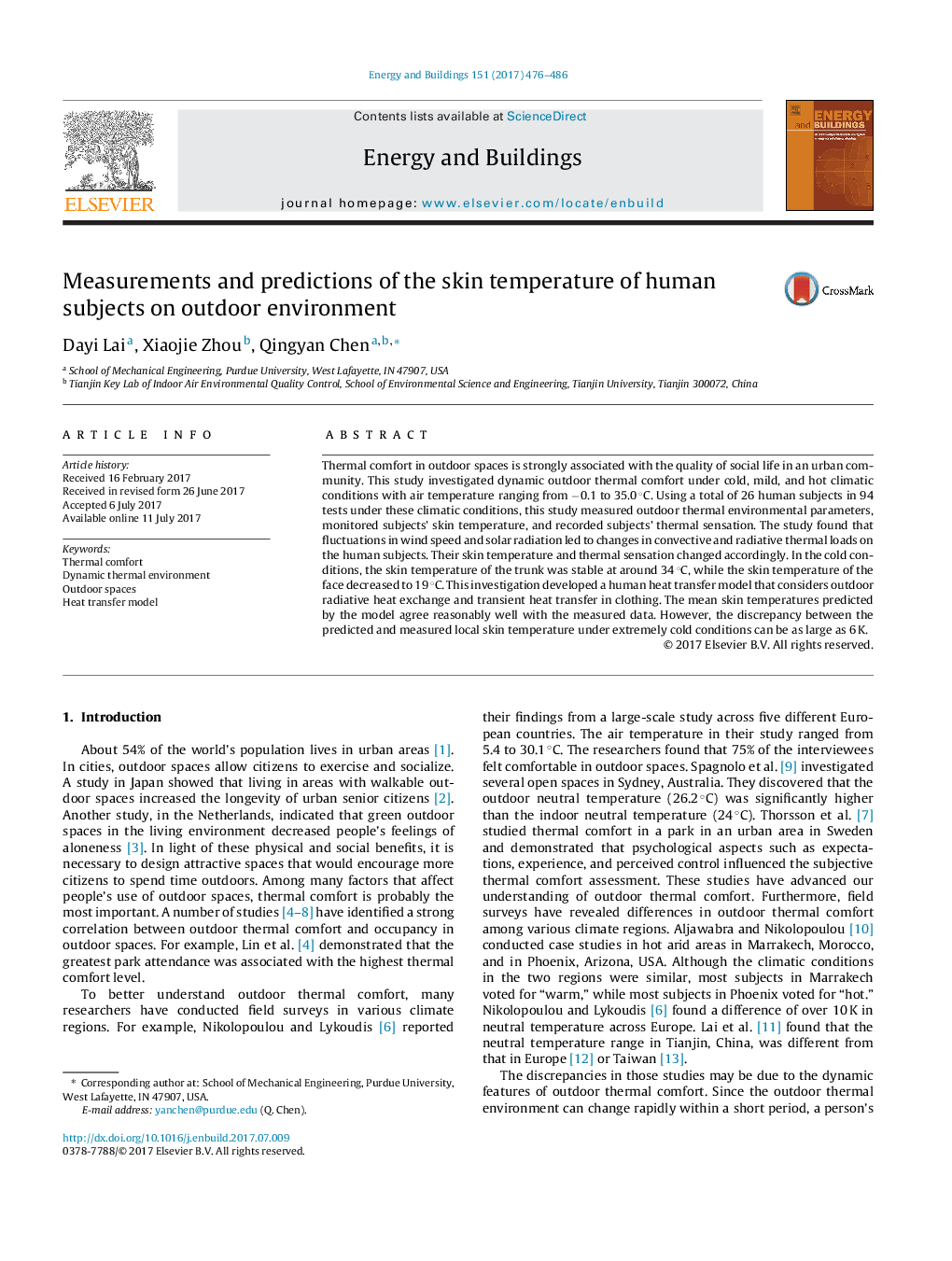| Article ID | Journal | Published Year | Pages | File Type |
|---|---|---|---|---|
| 6481120 | Energy and Buildings | 2017 | 11 Pages |
â¢This study investigated dynamic outdoor thermal comfort under various climatic conditions.â¢Fluctuations in wind speed and solar radiation lead to fluctuations in skin temperature and thermal sensation.â¢In cold conditions, the skin temperature difference at various body parts can be as large as 15 K.â¢This study developed a human heat transfer model that can well predict mean skin temperature in an outdoor environment.
Thermal comfort in outdoor spaces is strongly associated with the quality of social life in an urban community. This study investigated dynamic outdoor thermal comfort under cold, mild, and hot climatic conditions with air temperature ranging from â0.1 to 35.0 °C. Using a total of 26 human subjects in 94 tests under these climatic conditions, this study measured outdoor thermal environmental parameters, monitored subjects' skin temperature, and recorded subjects' thermal sensation. The study found that fluctuations in wind speed and solar radiation led to changes in convective and radiative thermal loads on the human subjects. Their skin temperature and thermal sensation changed accordingly. In the cold conditions, the skin temperature of the trunk was stable at around 34 °C, while the skin temperature of the face decreased to 19 °C. This investigation developed a human heat transfer model that considers outdoor radiative heat exchange and transient heat transfer in clothing. The mean skin temperatures predicted by the model agree reasonably well with the measured data. However, the discrepancy between the predicted and measured local skin temperature under extremely cold conditions can be as large as 6 K.
